Link Dump
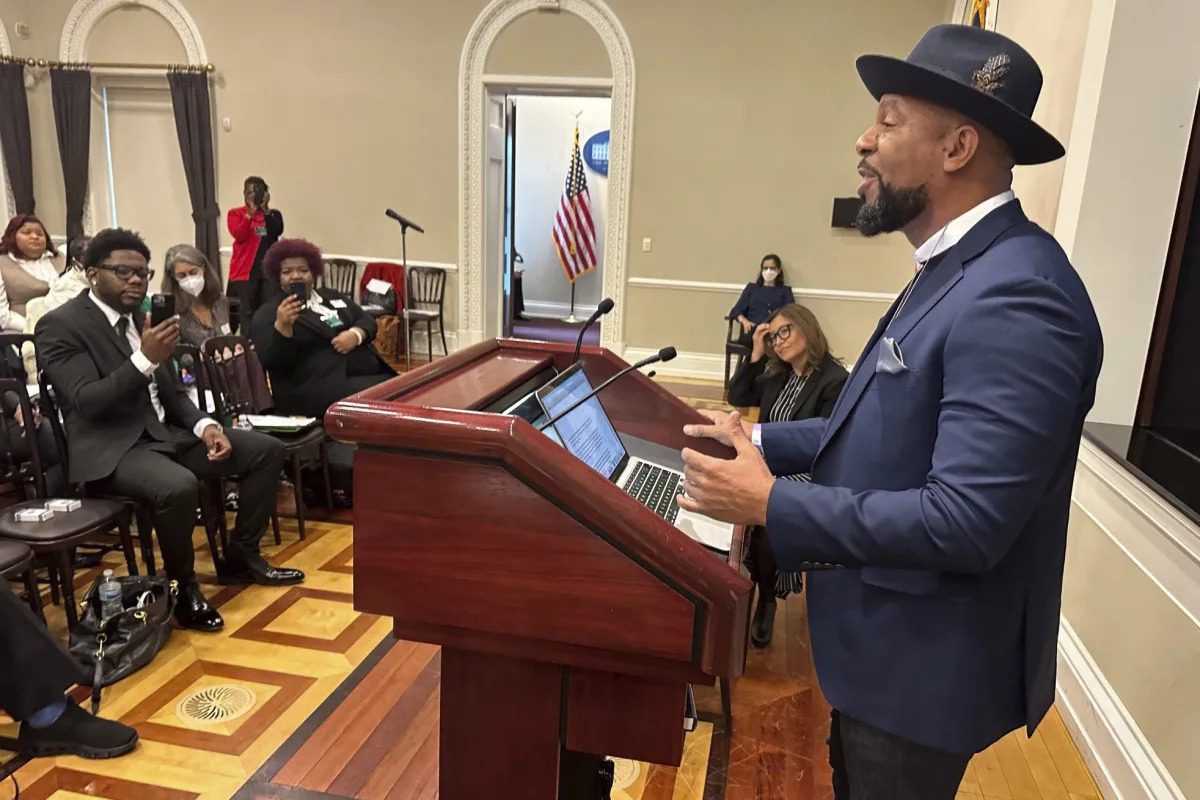
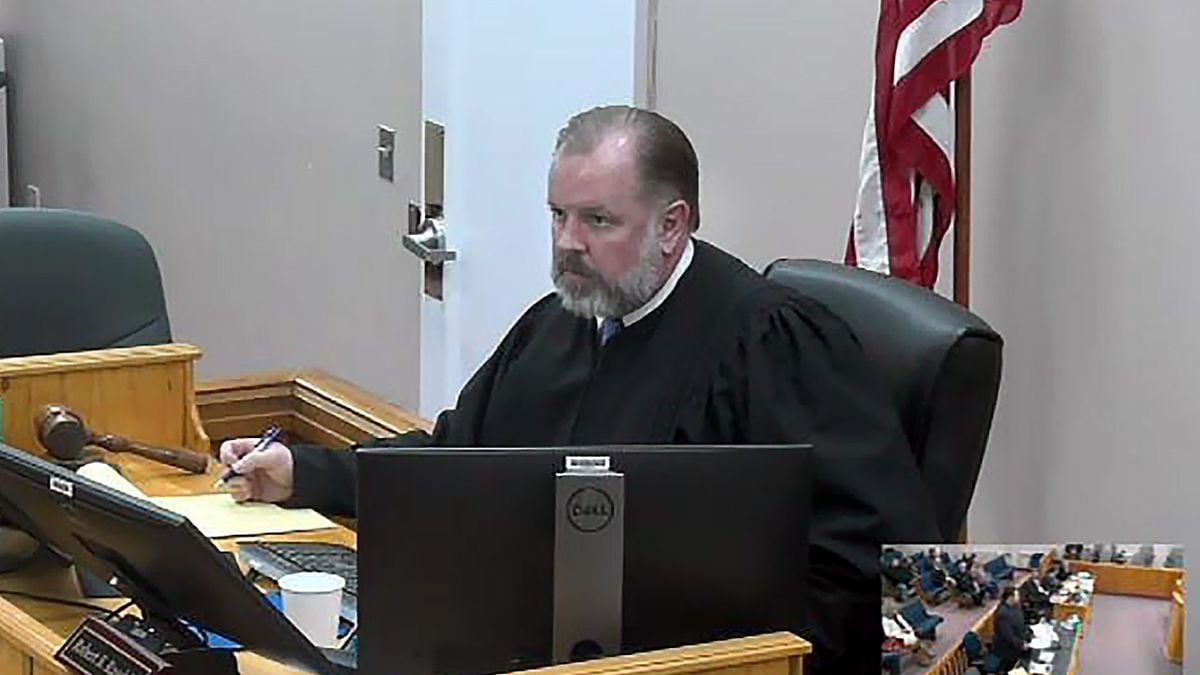
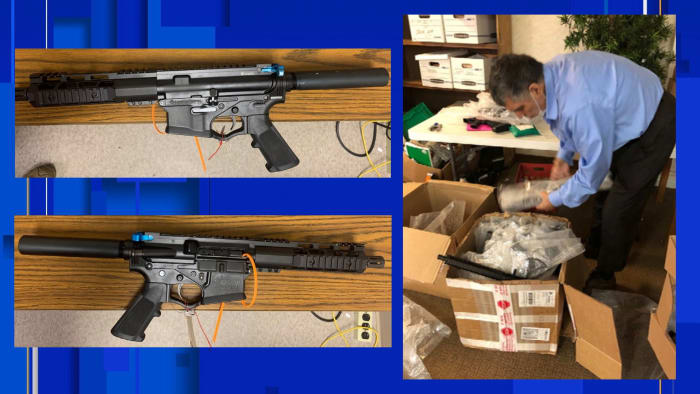
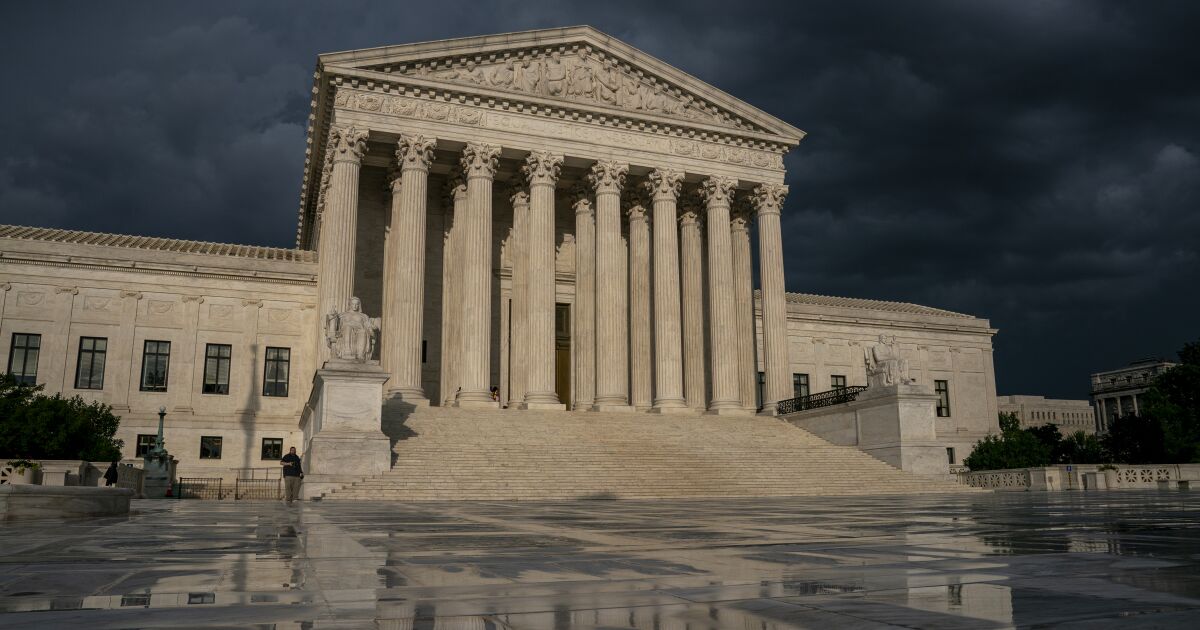
/cloudfront-us-east-1.images.arcpublishing.com/gray/5SE2COIBG5DHPPBGBRFI3R2MPM.png)
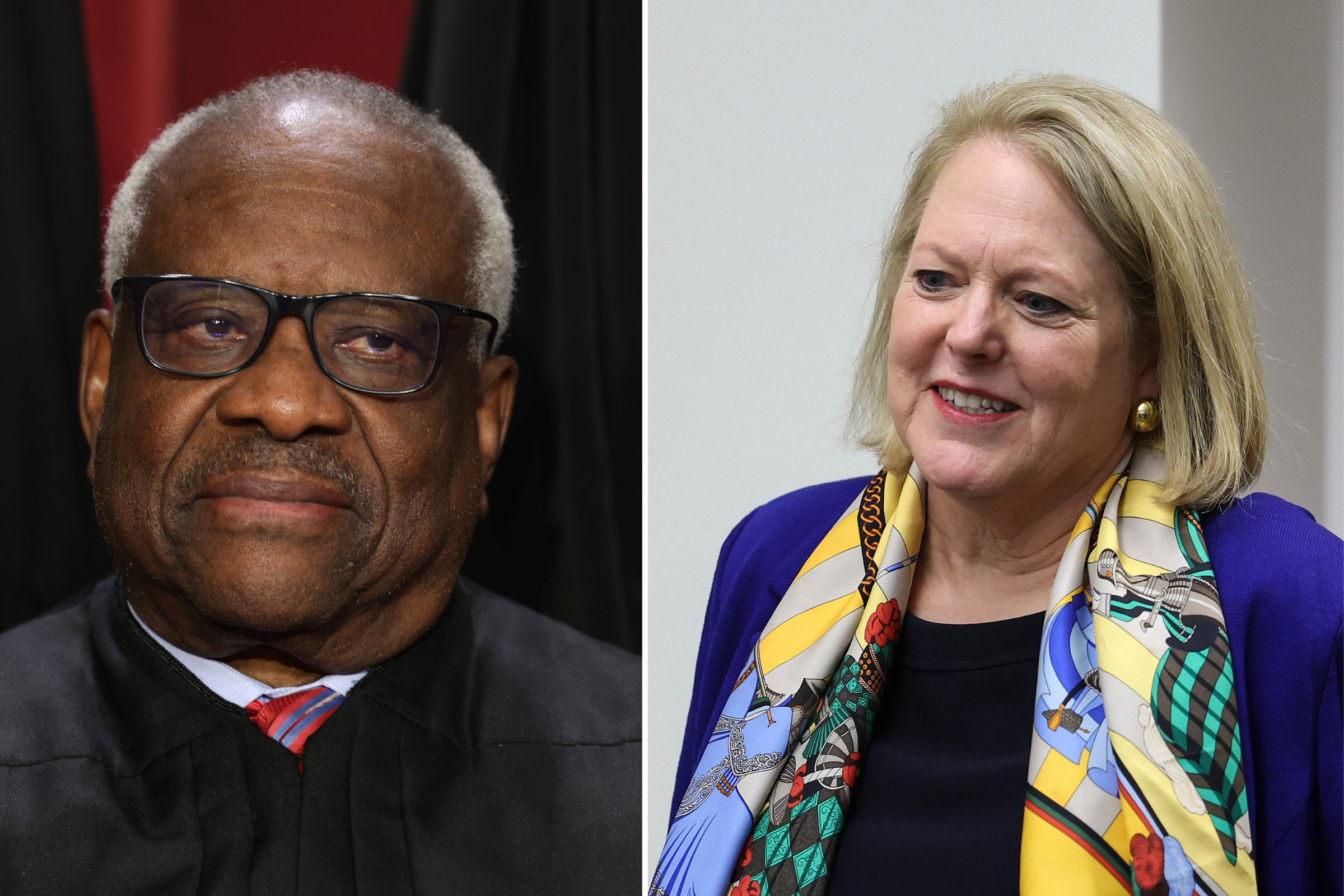


Where a Hispanic Catholic, and a Computer Geek write about Gun Rights, Self Defense and whatever else we can think about.




/cloudfront-us-east-1.images.arcpublishing.com/gray/5SE2COIBG5DHPPBGBRFI3R2MPM.png)



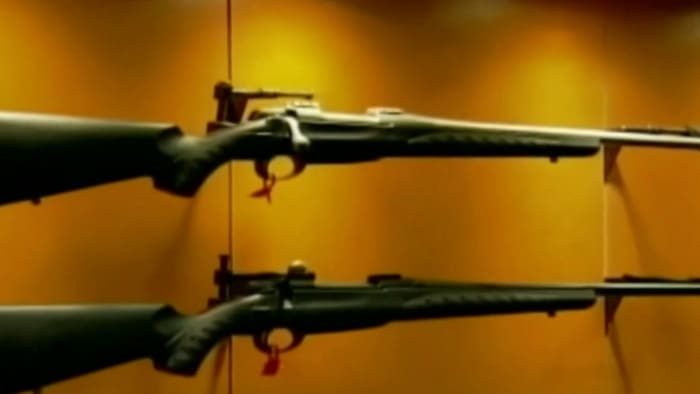
/cloudfront-us-east-1.images.arcpublishing.com/gray/MWXE5CU3XJFK5BWDXXLSO7HTMM.jpg)
B.L.U.F. GOA tells the Supreme Court that the State of New York is lying directly and by omission, has misrepresented the situation and is leaving out context in some assertions of fact. Finally they point out that the “interlocutory posture” of the case is because the State of New York couldn’t wait for the case to be heard at the District Court level.
So just how fast can a case move? Good question.
Dec 21, 2022: GOA for Antonyuk files for an Emergency Application for Immediate Administrative Relief and to Vacate Stay of Preliminary Injunction Issued by the United States Court of Appeals for the Second Circuit.
Dec 27, 2022: 3 business days later, Justice Sotomayor “requests” that Nigrelli et al. respond by Jan 3, 2023 1600
Jan 3, 2023 a response to application was filed by Nigrelli. It posted to the website after 1600 and it was electronically filed. Best guess is that they filed sometime after 1500.
Jan 5, 2023 GOA for Antonyuk files their reply. Less than 2 business days. It is a fun read.
Section I:
The State claims that the CCIA’s purpose and scope was “to make necessary changes to the State’s firearms licensing and possession laws” after Bruen. GOA points out that no changes were necessary as the part about “proper cause” had been ruled unconstitutional and thus everything else could have stood as it was. There was no requirement for an “imporvement”.
The state also claims that Hochul’s purpose for calling a special legislative session to pass the CCIA was “to bring New York’s law into compliance with the [Bruen] decision.” Which again was not called for as just dropping the requirement for proper cause did that.
Section II:
The state claims that the “interlocutory Posture” (looking into a case before the lower court(s) have made their final decisions) of GOA’s application to the Supreme Court should cause the Supreme Court to reject the pleading.
GOA points out that it is the state that messed this up. When the state decided to appeal the Temporary Injunction issued by the district court that might have been ok. But when they ran to the second circuit crying over the preliminary injunction, that was requesting that the appeals court become involved in case that was in an interlocutory posture.
GOA continues with a scathing statement of how New York passed the CCIA as a direct insult to the Supreme Court over the Bruen decision.
As this Court recently reaffirmed, “[t]he constitutional right to bear arms in public for self-defense is not ‘a second-class right, subject to an entirely different body of rules than the other Bill of Rights guarantees.’” Bruen at 2156 (quoting McDonald v. City of Chi., 561 U.S. 742, 780 (2010)). Respondents’ plea for this Court to stand down is not persuasive here, where a state has reflexively enacted a law with the express purpose of defying and challenging a recent decision of this Court.
Section III:
The state claims that it is too soon for the Supreme court to weigh in on another 2A case. That the court must let 2A cases “percolate” and work out the new standard before the court accepts another 2A case.
In the states argument, they say that Bruen altered course from the Supreme Courts earlier 2A jurisprudence.
GOA replies with “Well what about Heller and McDonald, they set the correct courts but y’ll didn’t want to follow it. Bruen just clarified that there is no two step shuffle.” (Paraphrased, of course)
Or “Bruen merely reaffirmed what the Court had already decided more than a decade ago in District of Columbia v. Heller, 554 U.S. 570 (2008) and McDonald, repudiating the two-step “judge-empowering ‘interest-balancing inquiry’” that the lower courts had widely adopted.” to use their own words.
In addition, GOA took a pot shot at the state calling Bruen “frontier legal problems”.
Section IV:
The state claims that the “status quo.” is immediately after the CCIA went into effect. GOA points out that the status quo was what was in effect until that point of time and since the CCIA became law it has had multiple injunctions placed on it, it has been off again on again and nothing is determined yet.
But that is what the state wants the court to rule is the status quo.
GOA notes that the CCIA was challenged almost as soon as it was legally permissible to do so. Since the courts can only address a conflict where the parties have standing there is no way of legally challenging a law before it takes affect.
Section V:
The state claims that Antonyuk is unlikely to succeed in the case.
The state argues that Antonyuk hasn’t demonstrated that the Second Circuit clearly and demonstrably erred in issuing a stay. GOA responds with WTF did you expect us to do when they only said “h]aving weighed the applicable factors, see In re World Trade Ctr. Disaster Site Litig., 503 F.3d 167, 170 (2d Cir. 2007), we conclude that a stay pending appeal is warranted.”
Requiring applicants to mount a robust legal challenge to an opinion that does not exist would merely incentivize lower courts to provide no analysis and justification whatsoever for their decisions in situations like this. On the contrary, it is the lower court’s lack of any analysis supporting its stay that represents error.
Part of what is going on is that New York State told the Second Circuit to consider “calibrating the required merits showing to the strength of the equities.” In other words, the State got the Second Circuit to use a mean-ends balancing that Bruen explicitly disallows.
GOA points out that the state didn’t actually identify any error in the district court’s analysis. The state argues that the CCI doesn’t implicate the second amendment. Because it doesn’t implicate the second amendment the state is not required to provide historical evidence supporting their law.”
The gist of the states argument is that because it is just licensing and not actually stopping people from keeping and bearing arms that there is no conflict with the second amendment.
“yes, you are allowed to have a political event in the town square. You’ll need to get a permit. You’ll have to provide a million dollars in bond in case there is violence at your event. What? Somebody else does the violence? Doesn’t matter, if you didn’t hold the event there would be no violence. And you need the permission of the mayor and the town council.”
The fact that your political event is going to be slamming on the mayor and the town council wont affect your ability to get a permit… Nope…
In addition, the state claims that “good moral character” is nothing like “good cause”. Since good moral character has been a part of many license requirements it has historical weight.
One of the things the last update mentioned was the state was arguing that one of the plaintiffs didn’t have standing because they never applied for a CCW.
The CCIA has an in person requirement. The plaintiff attempted to apply but was told that it would be more than a year before he could have an appointment to submit his application. The county official that would approve or deny the CCW application has already stated that he would act in accordance with the CCIA and deny if the plaintiff provided an incomplete application.
Big one here because we are going to see this in other states. The state argues that “good moral character” is just “ensure[s] only that those bearing arms in the jurisdiction are, in fact, ‘law-abiding, responsible citizens’…”
Since the Supreme Court has used the phrase “law-abiding, responsible citizens” the states are going to use that phrase to justify subjectively evaluating peoples right to keep and bear arms based on if the state things they are “law-abiding” and “responsible citizens”. Just how responsible is a California citizen that wants to own and carry a gun, according to their governor.
Second, Respondents claim that no “historical analysis” is necessary to defend the CCIA’s licensing provisions because “Bruen endorsed shall-issue licensing regimes” – claiming the CCIA to be such a regime. Opp. 25 (emphasis added). When this outlandish argument – that Bruen somehow “endorsed” dozens of states’ statutory schemes that were not part of the case or before the Court – was made to the district court, the court called Respondents “just disingenuous.”
The state called GOA’s claim that the CCIA made all of New York sensitive locations “hyperbole”. GOA responded to that insult with: When challenged to list the remaining places where New Yorkers could still carry firearms, Governor Hochul replied ‘probably some streets.’
GOA called out the states lie about what the CCIA does regarding making healthcare facilities gun free zones. One of the plaintiffs is a Pastor. Since the CCIA bans guns at “any location providing … chemical dependence care or services.” This means that he can’t carry in the church where he provides counseling. And if he goes someplace else and provides the same service, that place then becomes a location providing chemical dependence care or services.
The state also claims that the case is moving to fast. That they are not being given enough time to prepare and respond. GOA replies with you should have thought of that before you passed the law. You should have had all this done before the bill was even presented for signature.
And a big one, that I missed. When I read the state’s response they said the Second Circuit had decided to hear the case on an expedited basis. The actual facts are that the Second Circuit only granted expedited consideration to the states request for a stay. Not to the plaintiffs appeal. The state has actually requested an extended scheduling to draw the case out even longer.
Conclusion
Respondents claim that vacatur of the Second Circuit’s unreasoned stay would mean “disruption of the orderly appellate process.” Opp. at 17. On the contrary, as this Court has explained, it is the stay itself which represents “an ‘intrusion into the ordinary processes of administration and judicial review’….” Nken at 427. The fact that the Second Circuit did not see fit to provide even the briefest explanation for its “intrusion” not only causes significant irreparable harm to Applicants, but also has deprived “[t]he parties and the public [of their] entitle[ment] to both careful review and a meaningful decision….” Id.
Whereas the district court took a deliberate and systematic approach, carefully weighing each of the CCIA’s provisions under the Bruen framework, the Second Circuit applied the wrong legal standard and issued a knee-jerk conclusory opinion entirely devoid of reasoning or legal analysis. But even so, no appellate judge has suggested that the district court committed any legal error – yet the circuit court thwarted the critical protections offered by the district court’s preliminary injunction, which temporarily paused enforcement of a “patently unconstitutional” statute and would protect the Second Amendment rights of New Yorkers pending a decision on the merits.
Tellingly, in spite of Respondents’ opposition, five of the nine defendants below did not object to the substance of the relief Applicants sought, and six of the nine did not appeal entry of the district court’s preliminary injunction. Moreover, even Respondents did not ask the Second Circuit to stay the district court’s entire injunction (Stay Mot. Document 18 at 13 n.5), possibly recognizing that certain portions of the CCIA are entirely indefensible.
It was error for the Second Circuit to stay the district court’s injunction. This Court should vacate that stay pending the orderly resolution of Respondents’ appeal, thereby once again making clear to New York that the Second Amendment is neither a “constitutional orphan” nor a “second-class right.”
We have the results of our polling on Hagar’s article. As of 1900 last night it was 44 91% yes, 6% no and 2% If they make some changes.
By the time you are reading this you’ll be able to look at the poll results yourself.
As far as infrastructure goes. I have all of the sites as they existed before that machine was turned off. I was about to start bringing the discourse site back online when a client site went down. I didn’t think that was resolved until 0400. At 0900 the client called me to tell me that it wasn’t really resolved so I continued fixing the site until it was up again.
This sort of took the upgrade to WP 6.1 on hold as well as bringing up our video and discourse servers.
As long as there are no more emergencies this week, I should have time to get that done this weekend.
I’ve taken to not showing polling results until the poll closes. Do you prefer to see the poll results as the poll runs or do you prefer waiting until the poll closes?
There is a fair bit of action happening in 2A cases. New ones are filed almost daily it seems.
Thank you again to all of you that support us by being members, commenting, reading, and sharing. It means a great deal to us.
Are there any subjects you are interested in directly? More of J.Kb’s short stories? Something in particular from behind enemy lines? A particular court case that you would like me to research and report on?
Feel free to let us have it in the comments below. Remember that everybody can comment on Friday Feedback, it is not a members only article.
In the case now known as “Antonyuk III” we have a number of New York residents that have challenged the New York State Concealed Carry Improvement Act (CCIA). They are joined by a number of second amendment advocate groups, Gun Owners of America (GOA) and, IIRC, the Firearms Policy Coalition (FPC).
The groups are providing the backing needed to actually carry out the lawsuit in terms of funding and lawyers. The residents are the people that are actually suing.
Ivan Antonyuk first filed suit shortly after the CCIA was signed into law. He and is fellow plaintiffs (good guys) filed their case in the Northern District of NYS where the case was assigned to Judge Suddaby. Judge Suddaby looked at the case and decided that the plaintiffs did not have standing.
From the Respondents (Defendants, bad guys) response to the Supreme Court:
But despite the absence of a live controversy, the court proceeded to render an advisory opinion describing what “would constitute the Court’s holding” on the merits if the plaintiffs were “found to, in fact, possess standing.”2 Id. at *25; see id. at *26-37. Specifically, the court stated that the CCIA was “an unconstitutional statute,” and indicated that it would have enjoined the enforcement of nearly every challenged provision of the law—including most of the licensing requirements, each of the codified sensitive locations (including schools and government buildings), and the restricted-location provision in its entirety. Id. at *26
New York state is attempting to say that they didn’t get a fair shake with Judge Suddaby because he told the plaintiffs that they would have won on the merits if they had proper standing.
The plaintiffs regrouped, add some more people and filed again. Judge Suddaby took the case back. The state argued that he should not have gotten the case back because it was a new case. Judge Suddaby told the state to suck eggs, it was the same case but with different plaintiffs who did have standing.
Having established standing, Judge Suddaby started spanking New York state. Every time he spanked them, they ran to the second circuit court to get his injunctions stayed.
In the last go round the second circuit court granted a stay pending appeal. According to the state the appeal will be heard soon but there is no promise of that and the state and circuit court can drag this out for months if not years.
The circuit court’s stated reasoning for the stay was only a few words. A sentence or two.
Having run into the stall tactics, GOA did an end run and went to the Supreme Court and asked them for an “EMERGENCY APPLICATION FOR IMMEDIATE ADMINISTRATIVE RELIEF AND TO VACATE STAY OF PRELIMINARY INJUNCTION ISSUED BY THE UNITED STATES COURT OF APPEALS FOR THE SECOND CIRCUIT”
This was filed on December 21st, 2022. Justice Sotomayor ordered “Response to application (22A557) requested by Justice Sotomayor, due by 4 p.m. (EST), Tuesday, January 3, 2023.” This was on December 27th. This is only three days after the request for emergency relief was filed, including Christmas. Very very fast.
On January 3rd the response was filed by New York state. It runs to 43 pages. It was posted to the website after 1600.
New York state is very few arguments. The first is that Judge Suddaby stepped outside of the question presented and made rulings on parts of the CCIA that were not being challenged.
The second was that Judge Suddaby granted standing when he should not. One of the plaintiffs said that he had standing because he wanted to apply for a CCW but was unwilling to supply all the invasive social information the CCIA demands. Things like social media accounts, people that live with him, multiple non family references and so forth.
Because he was unwilling to give up this information, per the CCIA, he would be denied a CCW. The state argues that because he didn’t actually apply for a CCW he doesn’t have standing. Never mind that the CCIA training requirements are so out of whack with reality that nobody is getting CCWs at this time and non are expected to be granted until sometime later this year (2023).
They claim that other parts of the CCIA can’t be challenged because of lack of standing because these CCW holders haven’t actually violated the CCIA by entering the CCIA defined gun free zones.
There is somewhere case law that says that you don’t actually have to be arrested to challenge a law. The state has turned this upside down and said the plaintiffs must break the law before they have standing. I also believe that the states says that the state must take notice of the plaintiffs breaking the law before it counts.
The state argues that the time is not ripe for the Supreme Court to take up any 2A case. They say the Supreme Court has to let the cases “percolate” so that there is a history and fact finding prior to taking up a case.
The state actually spends a fair bit of e-ink telling the court that the court won’t take up the case.
Finally, for this summary, the state argues that since the state has had a requirement for good moral character since 1913 and Bruen didn’t say anything about “good moral character” that anything the state does to determine the moral character of an applicant is allowable.
SCOTUS Docket: No. 22A557
Application for Emergency Relief
New York State’s Response
First of all, there is Law. The Law is passed by the legislature, and it directs some government agency to do something. Which leads to…
Regulations. Regulations are what the tasked agency writes to tell the public exactly how they will do something. Which leads to Policy/Procedure which is how the worker bee in that agency performs their tasks.
.
But, the thing that really counts is Case Law. (IANAL warning in full effect here.) Because laws/regulations/policies are written by humans, there will always be some ambiguous parts. Which generally leads to lawsuits.
When the Judge rules in the case, it can forever alter the way the law is implemented. A judge might write an opinion that includes a legal definition of a term of art that was not part of the Law or Regulation. Or, they may declare the law does not mean _______ as the Agency interpreted it, but instead means ________. Could be anything.
.
The lesson here is reading the law is one thing, reading the regulations is another, but the thing that really makes a difference is the rulings on suits brought against the law. That tends to be the final word.
— CBMTTek
US law is based on the Constitution, everything flows from it, or should. Any law, regulation, or procedure should be consistent with the Constitution.
In the best of worlds before a bill was even presented to the legislature it would be vetted by people that actually care about the constitution(s) of the US and the State. Unfortunately this is not the case. Or if it is done it is such a poort analysis as to make no nevermind.
“We read the Constitution and our bill is Constitutional” does not mean that it is Constitutional. Just that the legislator wants it to be.
The next stop for checking if a bill is Constitutional is when the bill moves to the next chamber of the legislature. Again we have the issue of the situation where the people that want the bill to pass will just claim it is Constitutional.
Finally, the President or the Governor should check it for Constitutionality. This very seldom happens.
So now Bill has become a law. It is up to the executive branch to enact that law. AS CBMTTek says, that requires interpretation. If a word or phrase is not defined by the Law, it must be defined by regulation.
Even if the word is well defined, “of the People”, the regulators might decide to twist the words. So we end up with “of the Militia/State” where the clear meaning is “People”.
The regulators are not responsible for deciding if a law or regulation is constitutional, they are only responsible for making sure that the regulation is supported by law. Or that they can twist the words to match what is supported by law.
Thus we end up with everybody knowing what a frame or receiver is. But the ATF gets to say that something that is not a receiver becomes one if you drill a hole in it, or make a dimple in the right place. An object becomes a firearm, underlaw, when it is a frame or receiver, not when it is one hole away.
Consider an AR-15 receiver v. an M16/4 receiver. That AR-15 receiver is not a machine gun. It only becomes a machine gun after that hole is drilled. Only when it is capable of receiving all of the fire control group that complete it as a machine gun.
If that AR-15 doesn’t have the space to hold an auto-sear, even if the fourth hole is drilled, it still isn’t a machine gun, even if the ATF says it is.
Once the regulations are written, somebody has to write the procedures used to follow the regulations. The law says that the FFL has to maintain a record of all firearms sold. The GCA of 1968 doesn’t say anything about having to keep a record of all firearms received. It is the regulations that describe what information has to be kept, how it has to be kept, and how the ATF (regulatory agency) gets to verify that information.
There is no Constitutional authority for the ATF to inspect an FFLs books. That would require probable cause. What has happened is that the state has made it a condition on holding an FFL to give up your fourth amendment rights. Sort of like there is no federal authority to set speed limits. It is just that the federal government will withhold funding if the state doesn’t set the speed limits the federal government wants.
When a government agent goes to do something, they are suppose to follow the procedures laid out for them by their superior. This tells them how to discover issues that can lead to enforcement actions. When the ATF agent shows up at the FFL and asks to see their records, they are suppose to follow a procedure.
Once they start the examination, they are suppose to be following the procedures and guidelines that were given to them. When we see multiple ATF agents using digital cameras to capture information from 4473s, that strongly suggests that it is a procedure they were told to follow.
As an example of procedures being followed, consider a YouTube video of CPS “visiting” a household. CPS had been told to leave the property when they first showed up. So they got the local police involved. The police arrived and found a gate across the drive and the property was properly posted “No Trespassing”.
CPS got out of their car and the cops got out of theirs. They started walking up the drive. When they got to the gate CPS went over and the cops stopped.
The procedures that the cops were following said that they needed probable cause to enter the property. Having some government agent tell them to intimidate the household wasn’t. CPS on the other hand had a procedure which was to force their way into the house via verbal and then intimidation and threats.
These laws, regulations, and procedures lead to conflict between individuals and the government. Individuals in a legal sense so it includes corporations and other such legal entities.
When there is conflict the issue goes before a court. If there are facts to be determined (Did Bob put his hands on Jill?) then either a jury or a judge will make those determination. So a jury might be asked to decide if the accused willfully did something or was it an accident (was she pushed or did she fall?)
Part of the trial/argument stage is to decide what facts are allowed into the case.
Another part of the legal process is when the actual law is challenged. The city says that you are not permitted have a gathering in the city park of more than 25 people without city permission. You stood up on a rock in the city park and started giving a speech. Suddenly there were a few hundred people there listening. The cops arrest you for having a gathering of more than 25 people without permission.
In court the facts are clear. There was a gathering of more than 25 people. It is to be determined if you are legally responsible for causing that gathering. If you are, then you will be found guilty and a punishment applied. On the other hand, you could challenge the law as a violation of your right to free speech.
It is also possible for a person to challenge a law directly. To file a lawsuit alleging that some law, regulation, or procedure is in violation of a higher law. This is where we see most of the second amendment cases coming.
Now the Constitution sets up the Supreme court and such inferior courts as are needed. (I didn’t lookup the exact wording). The reason is that under common law, decisions made by the higher courts set precedent for the inferior courts. This is “case law”
If the Second Circuit court says that the second amendment only applies to the right of the state militia to keep and bear arms, all inferior courts to the second circuit must follow that opinion. If the Supreme court says that the second amendment applies to all the people, regardless of their membership in the organized militia, then all the circuit courts and all the district courts and all the state supreme courts and all the courts inferior to the state supreme court must follow that opinion.
This is how we create case law.
When a district court makes a decision it is not case law. It can be used by other district courts but it is not precedent. In addition, decisions/opinions for district courts in different circuits count for even less. It is only courts that are superior to a court that create precedent for the inferior court.
As the courts make their decisions/opinions they are creating case law for themselves and inferior courts. Those opinions should describe what the question is, it should define all the terms within that question, and it should then support those definitions. Finally the court says why the made the the decision they made.
Unfortunately, there are people that conflate the different parts of court decisions. When the court says “this is an example” it doesn’t mean that it is the only or that it is the common, or that it is everything except that single example. But there are people that will take it that way.
We hear that when some moron argues that the second amendment only applies to muskets or only to the militia or any of the other stupid arguments.
The supreme court works hard at defining terms. Legislators, not so much.
A lawyer once looked over a contract I had written. He told me that it was good but that it was too clear. As he put it, lawyers like terms in contracts that can lead to conflict, because that’s when they make money. While to us a good contract is a way of making sure there is not conflict later.
It is this case law that creates the legal definitions of terms. It is this case law that tells us how to apply the different terms. It is case law that tells us what the actual law says or does.
ObamaCare doesn’t penalize you for not having health insurance, it just increases your taxes. This is case law, even though the legislature said it was a penality.
The legislature said that a firearm is anything that expels a projectile by means of an explosive. It also includes those things that can be “readily” converted to expel a projectile by means of an explosive.
No court has defined what “readily” means. Since there is no case law the regulatory agency can set the definitions. As soon as they set those definitions then it can be challenged and we can create case law.
The ATF is also trying to change the definition of a frame or receiver. They are perfectly within the scope of the law to say that something is or is not a receiver. They can even say that something can be converted into a frame or receiver. What they can’t do is change the law to claim that something that is not a frame or receiver should be treated as if it is a frame or receiver.
If something can be readily converted into a frame or receiver then it is not a frame or receiver. If it is not a frame or receiver then it is not a firearm per the GCA of 1968.
Back in the 80’s when I was at University payday always meant a trip down the main drag of collage town.
The trek started at the music store, went to the second music store, followed by the book store, and ended at the ice cream parlor.
There I would have my shake and start reading the latest book I had pulled off the “new arrivals” shelf.
But when I got home, that was when the music went on. I would sit and listen to music from good speakers and good CD player and escape.
One of the artist I stumbled onto was Kate Bush.
She was recently rediscovered when the show Stranger Things featured her music.
Hope you enjoy a trip back in time or if this is your first time, some exposure to that old timey music.
videos.gunfreezone.net and discourse.gunfreezone.net are off line for a short a couple of more days.